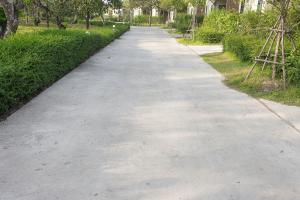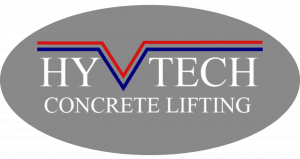Insurance providers see uneven concrete as a significant risk factor, not only in terms of liability but also in the potential for costly claims related to injuries or property damage.”
PONCHATOULA, LA, UNITED STATES, January 31, 2025 /EINPresswire.com/ -- Uneven concrete surfaces, such as walkways, driveways, and patios, are increasingly drawing the attention of homeowner insurance providers. — Darren Averitt
With safety and liability as central concerns, insurance companies are scrutinizing properties with these potential hazards, often requiring repairs to avoid policy cancellations or increased premiums. This shift underscores the importance of maintaining level and safe concrete surfaces as part of routine property management.
Darren Averitt, owner of Hy Tech Concrete Lifting, highlights the growing importance of addressing uneven concrete. "Insurance providers see uneven concrete as a significant risk factor, not only in terms of liability but also in the potential for costly claims related to injuries or property damage. Homeowners should understand how these issues can affect their coverage and take proactive measures to mitigate risks."
Why Uneven Concrete is a Concern for Insurers
The presence of uneven concrete on a property is not just a cosmetic issue; it represents a real safety hazard. Insurance companies focus on these hazards because they directly influence the likelihood of claims. Here’s why uneven concrete has become a focal point:
1. Increased Liability Risks
Uneven concrete creates trip-and-fall hazards that can lead to injuries, especially in high-traffic areas like walkways or driveways. When accidents occur on a homeowner’s property, the resulting claims for medical bills, legal fees, and other damages often fall under liability coverage. Insurers aim to minimize these risks by requiring homeowners to address uneven surfaces promptly.
2. Cost of Injury Claims
The financial impact of claims stemming from trip-and-fall accidents can be substantial. Medical expenses for injuries such as fractures, sprains, or head trauma can quickly add up, and legal costs may follow if a lawsuit is involved. For insurance providers, uneven concrete represents a preventable source of costly claims.
3. Property Standards and Safety
Uneven concrete can signal a lack of proper maintenance, raising concerns about the overall condition of the property. By requiring homeowners to repair these issues, insurers ensure that properties meet basic safety standards and reduce the likelihood of preventable accidents.
4. Impact on Policy Premiums
When uneven concrete is identified as a hazard, insurance providers may increase premiums to account for the heightened risk. In some cases, failure to address the issue could result in policy cancellation, leaving the homeowner without coverage.
Areas Commonly Affected by Uneven Concrete
Insurance inspections typically focus on key areas of a property where uneven concrete poses the greatest risks:
Walkways and Entryways: These high-traffic areas are particularly hazardous for guests and delivery workers.
Driveways: Cracks and uneven slabs in driveways can create trip hazards and increase the likelihood of vehicle damage.
Patios and Pool Decks: Recreational spaces with uneven surfaces are often flagged as high-risk areas due to their frequent use and proximity to pools.
How Homeowners Can Address Uneven Concrete
Proactively addressing uneven concrete is critical for homeowners looking to maintain their insurance coverage and avoid increased premiums. Several effective solutions are available, depending on the severity of the issue:
1. Concrete Lifting
Concrete lifting, also known as slabjacking or mudjacking, is a popular method for leveling sunken slabs. This technique involves injecting a specialized material beneath the concrete to raise it back to its original position. Concrete lifting is minimally invasive and provides a long-lasting solution for uneven surfaces.
2. Grinding
For smaller elevation differences, grinding down high points can create a smoother, level surface. This method is often used as a temporary fix or for less severe cases of uneven concrete.
3. Replacement
In situations where the concrete is extensively damaged or beyond repair, full replacement may be necessary. While this option is more labor-intensive, it ensures a completely restored and safe surface.
Preventing Uneven Concrete
Regular maintenance is essential for preventing uneven concrete and avoiding insurance-related complications. Homeowners can take the following steps to minimize risks:
Address Soil Erosion: Poor drainage or soil instability beneath concrete slabs can lead to sinking over time.
Proper landscaping and drainage systems help stabilize the soil and prevent future issues.
Inspect for Cracks: Small cracks can widen due to temperature changes or moisture infiltration. Timely repairs prevent further deterioration.
Monitor Tree Roots: Roots from nearby trees can push up concrete slabs, creating hazardous conditions.
Regularly trimming roots can mitigate this problem.
Communicating with Insurance Providers
If an insurance company identifies uneven concrete as a hazard, homeowners should take immediate action to address the issue. It’s important to understand the specific requirements outlined by the insurer and to provide documentation of completed repairs. Working with qualified contractors ensures that repairs meet safety standards and satisfy insurance requirements.
Benefits of Proactively Addressing Uneven Concrete
Repairing uneven concrete offers several benefits beyond maintaining insurance coverage:
Enhanced Safety: Reducing trip-and-fall hazards protects everyone on the property, from family members to guests and delivery personnel.
Peace of Mind: Addressing risks before accidents occur eliminates the stress of potential liability claims.
Preserved Property Value: Well-maintained concrete surfaces contribute to the overall condition and value of the property.
The Bigger Picture
Insurance companies’ focus on uneven concrete is part of a broader effort to reduce preventable risks and manage liability. For homeowners, this trend highlights the importance of regular property maintenance and taking a proactive approach to repairs. By addressing uneven concrete, homeowners can protect themselves from liability, maintain their insurance coverage, and ensure the safety of their property for years to come.
Morgan Thomas
Rhino Digital, LLC
+1 504-875-5036
email us here
Visit us on social media:
Facebook
Legal Disclaimer:
EIN Presswire provides this news content "as is" without warranty of any kind. We do not accept any responsibility or liability for the accuracy, content, images, videos, licenses, completeness, legality, or reliability of the information contained in this article. If you have any complaints or copyright issues related to this article, kindly contact the author above.



